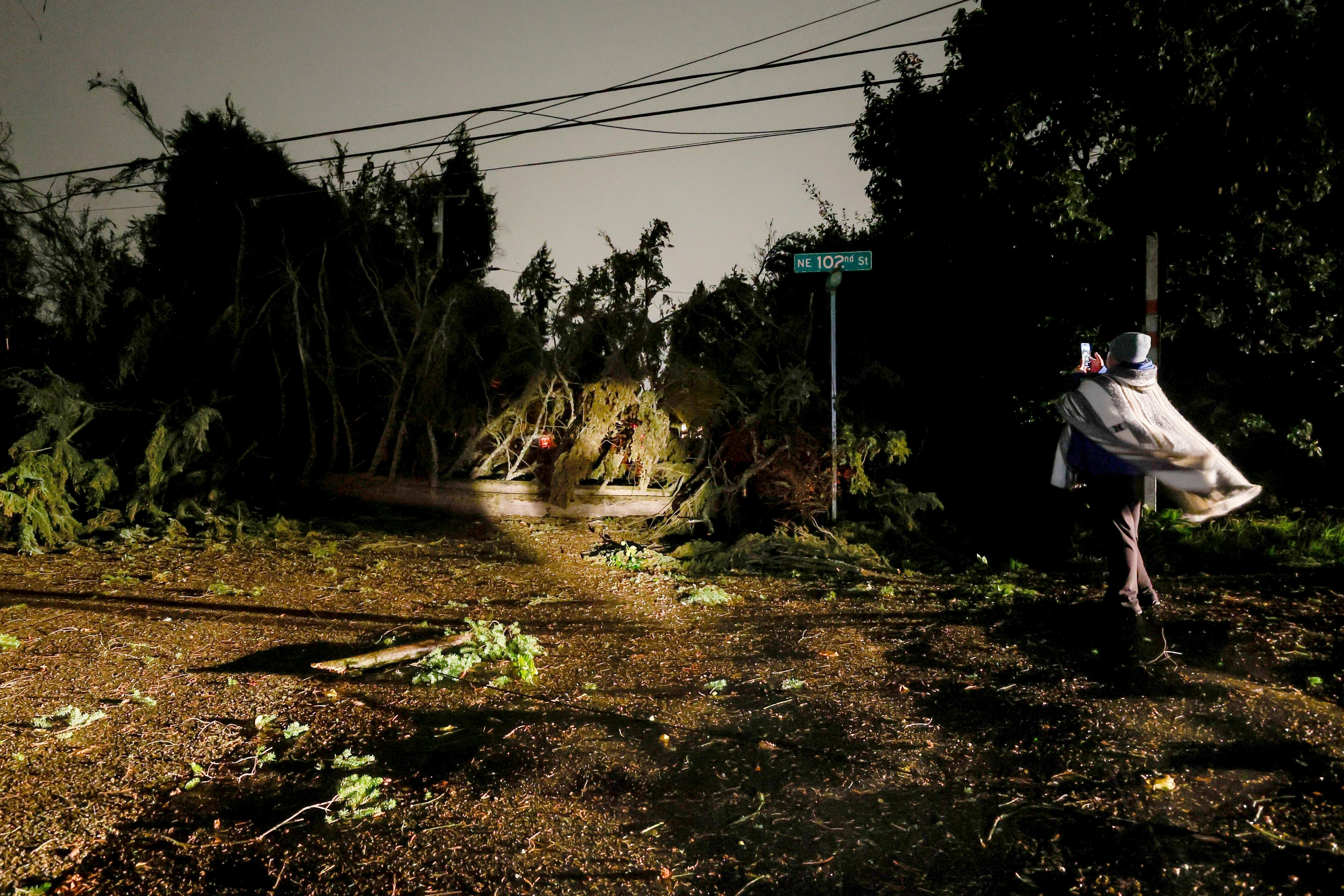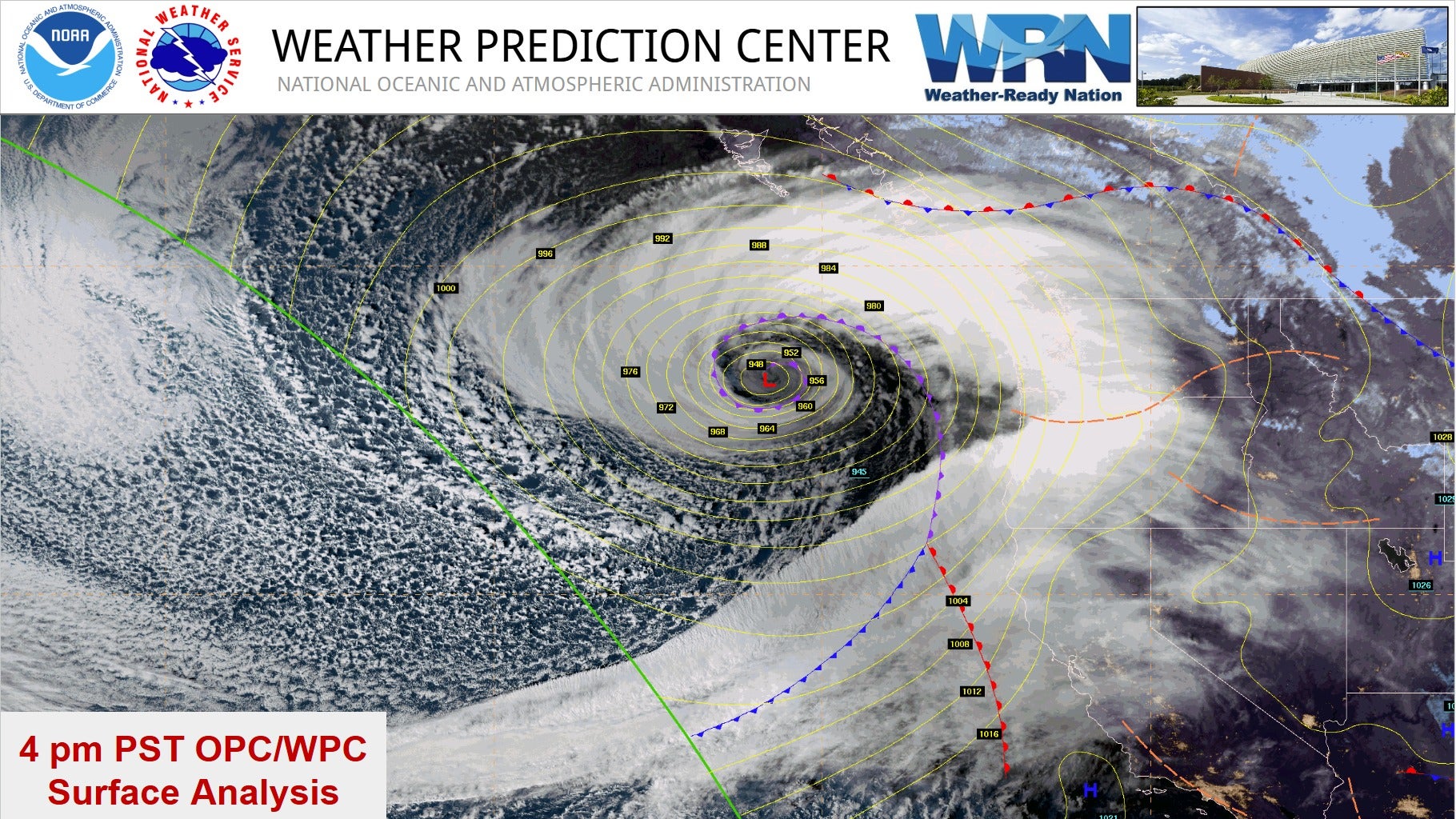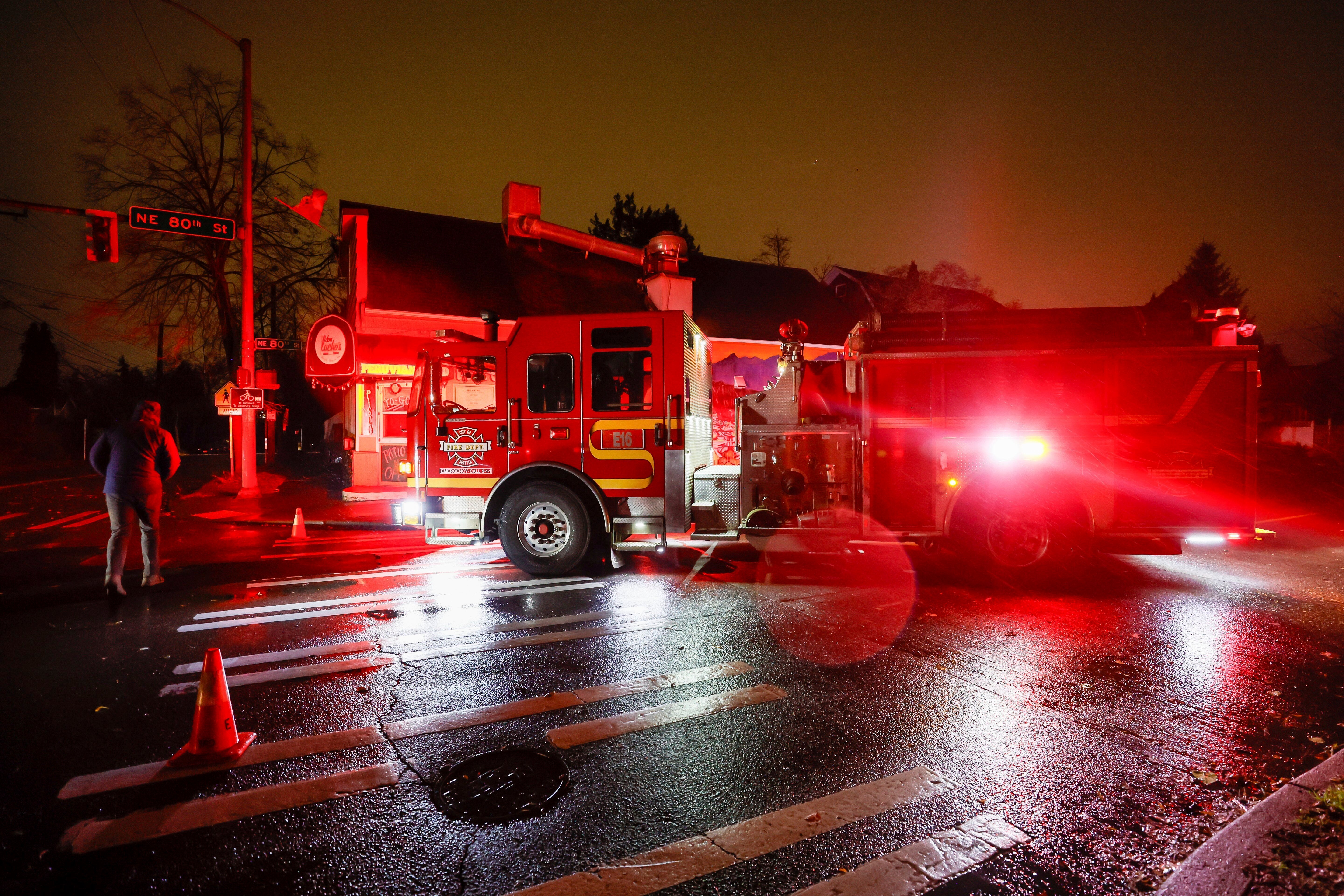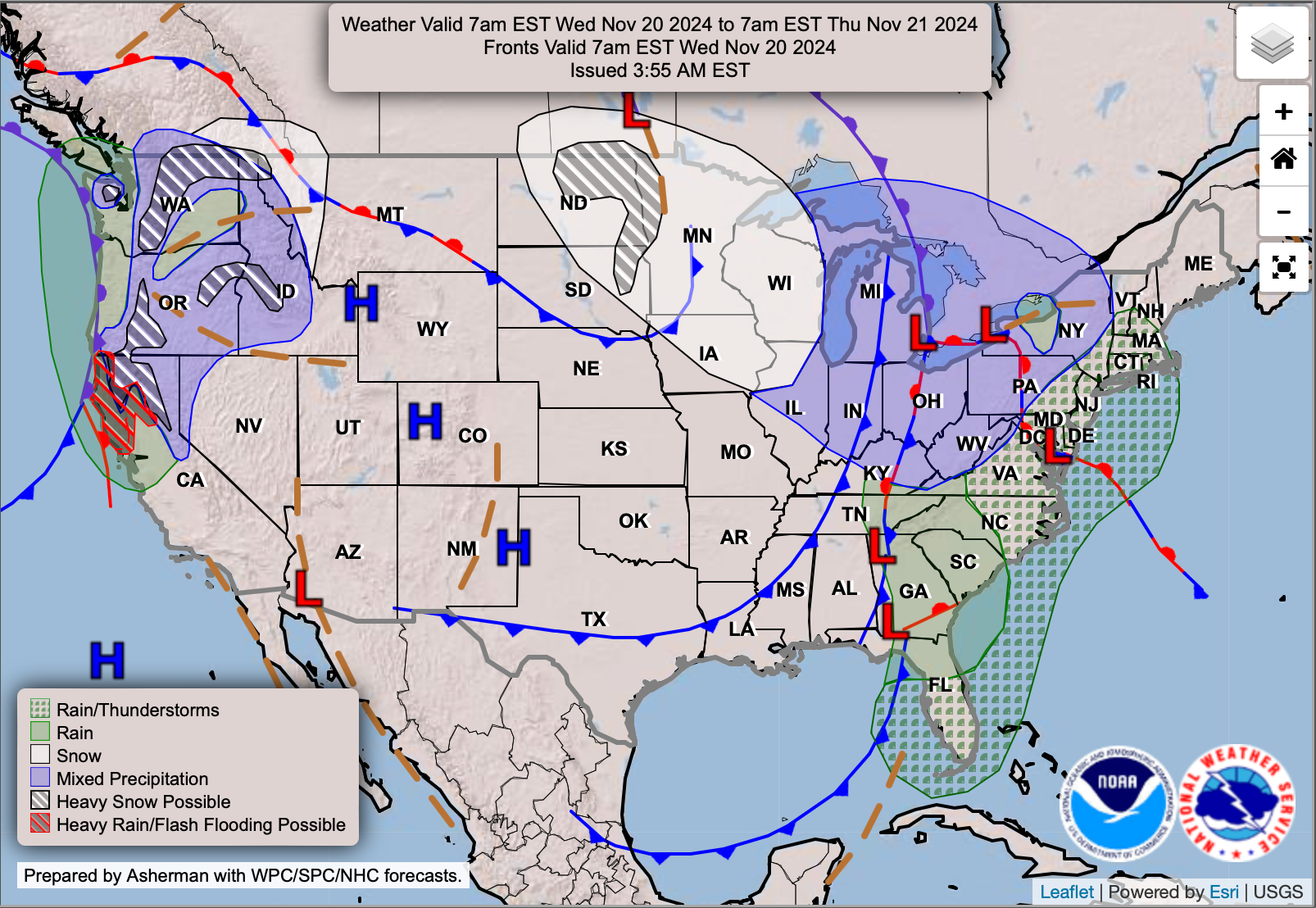A deadly “bomb cyclone” has ripped through Washington state, killing at least one person, downing trees and power lines, and leaving hundreds of thousands without power.
What was forecast to be one of the strongest storms in the northwest US in years struck on Tuesday evening, lashing the Pacific Northwest – a region covering Washington, Idaho and Oregon – and Northern California with heavy rain and high winds.
In northwest Washington, strong winds downed trees, striking homes and power lines and littering debris across roads.
Almost 710,000 homeowners and businesses in the state were without power as of Wednesday morning, with King and Snohomish counties the worst impacted areas.
In Lynnwood, a woman was killed when a large tree fell on a homeless encampment on Tuesday evening, South County Fire said in a statement on X.
Over in Seattle, a tree fell onto a vehicle, temporarily trapping a person inside before emergency services rescued them, the Seattle Fire Department reported.

Officials urged residents to hunker down at home, while rough winds and seas halted a ferry route in northwestern Washington between Port Townsend and Coupeville.
“There are so many trees and power lines down, we would be posting the locations till the lights turn on. Stay home and stay safe!” Snohomish Regional Fire and Rescue posted on X alongside a photograph of an impassable, debris-covered road.
The National Weather Service’s office in Seattle itself was battered by brutal weather conditions, knocking out its weather radio transmissions in the early hours of Wednesday morning. Meanwhile, the US Coast Guard’s sector in Puget Sound said in a statement that it was experiencing phone, radio and internet outage late on Tuesday evening.

The Weather Prediction Center had warned of damaging winds, excessive rainfall, and high surf for parts of the Pacific Northwest and Northern California.
Wind gusts were due to peak at 65mph in the region, combined with heavy snowfall resulting in blizzard conditions – creating “near impossible travel” at pass level, according to the WPC.
The “anomalously strong” storm system is considered a “bomb cyclone,” which occurs when a cyclone intensifies rapidly. It marks the strongest atmospheric river – a large, narrow band of moisture – that the regions have seen this season.

Western Washington saw strengthening winds throughout Tuesday evening with the storm anticipated to reach maximum intensity on Wednesday, the WPC said.
Wind speeds of 101mph were clocked off the coast of Vancouver Island in Canadian waters at approximated 10 p.m. ET on Tuesday evening, according to Seattle’s National Weather Service Branch.

The storm system is expected to weaken as it charts a path over the Cascades and through to northern California and southwest Oregon by Friday.
The Associated Press contributed to this report.




Leave a Comment